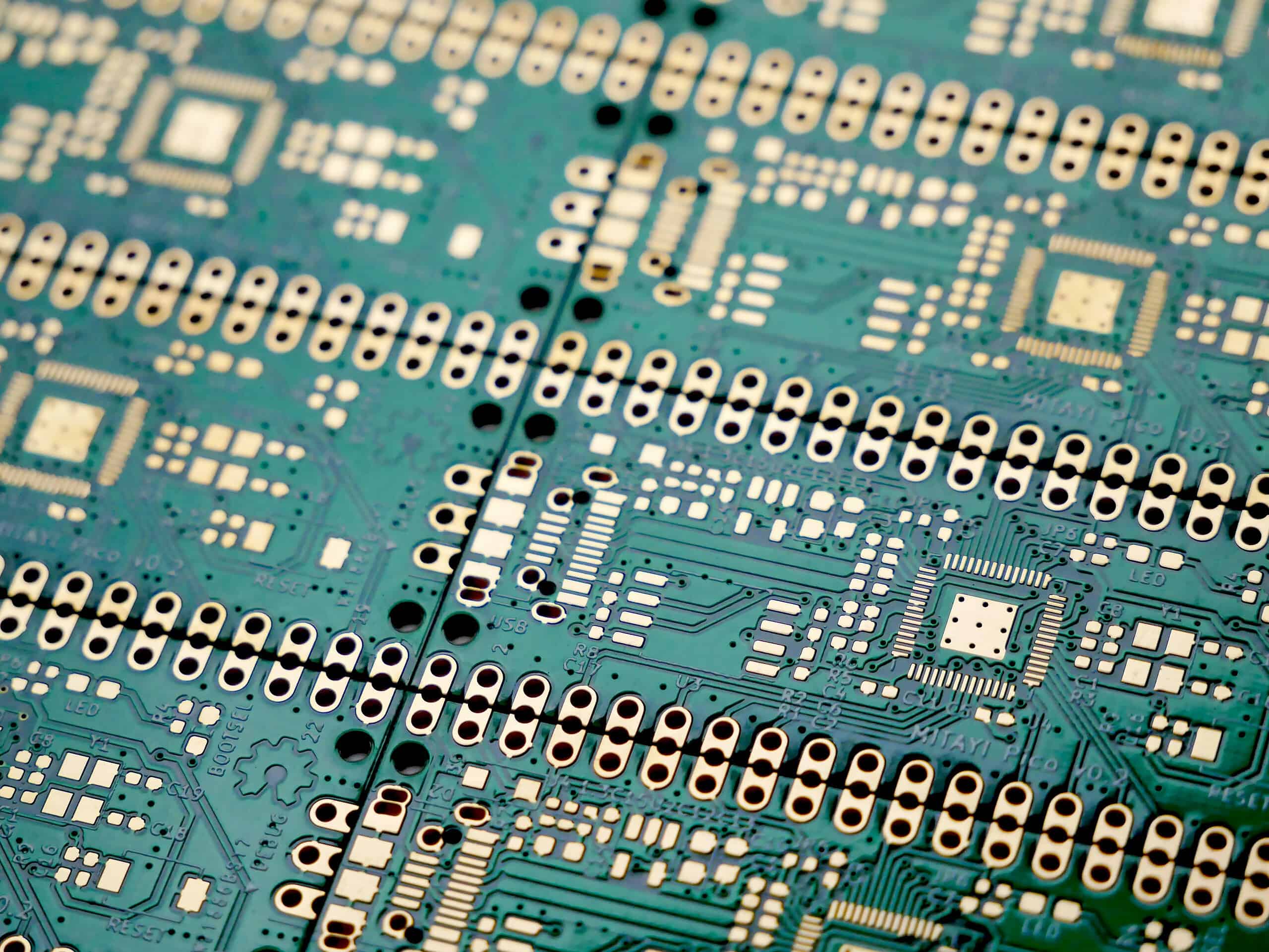In the digital age, Artificial Intelligence (AI) has emerged as a transformative force. AI is impacting possibilities across a myriad of sectors including healthcare, automotive, consumer electronics, and industrial automation. But AI also needs a lot of things to happen. It needs a lot of data, specialized software, and specialized hardware.
The world is no stranger to surging hardware demands. Recently, the semiconductor crisis has highlighted just how vulnerable our global supply chains can be, and how the needs of the tech industry can unexpectedly increase demand for components. Now, AI seems to be spurring demand for even the most basic electronic component: the printed circuit board (PCB).

PCBs form the backbone of virtually all electronic devices, providing a physical platform for electronic components and enabling the intricate electronic interconnections necessary for functionality. PCBs are constructed from layers of insulating material combined with electrical conductors and are interconnected through conductive pathways, or traces, etched from copper sheets laminated onto a non-conductive substrate. This intricate network of connections facilitates the flow of electric current and the exchange of signals between components, enabling the device to perform its designed functions. PCBs are crucial for the compact, reliable, and efficient operation of complex electronic systems, from simple gadgets to sophisticated computing and AI-based technologies.
In terms of PCB exports, China is by far the world’s largest player, followed by Taiwan, South Korea, and Japan. The US is in the 5th place, but with a far lower production.
Although researchers have made some innovations in terms of PCBs, the humble circuit board has remained largely stable and unchanged in the past few decades. So too, demand has grown slowly but surely. But AI is disrupting this trend, as it has disrupted so many other things.
According to recent reports, increased interest in AI has resulted in the need for more PCBs and other hardware. Essentially, the report says that PCB producers have to expect ramping demand in the following years.
This growth comes particularly from AI servers.
AI and PCBs
An AI server is designed specifically to handle the intensive computational demands of machine learning algorithms, deep learning models, and large-scale data processing tasks. Unlike standard servers, AI servers are equipped with specialized hardware, including high-performance GPUs (Graphics Processing Units) or other accelerators, that provide the necessary speed and efficiency for training AI models and executing complex calculations. By offering the computational horsepower required for AI tasks, AI servers enable faster model training, more efficient data analysis, and the deployment of AI solutions at scale.
But all this requires a lot of electronic components — and a lot of PCBs. Some companies are taking advantage of it. For instance, one major Taiwanese PCB maker expects its AI server components to make up 38 percent of its revenue, up from just 3% a couple of years ago. Other reports forecast a 6.6 percent compound annual growth rate for AI PCBs up to 2028. For a mature market like PCBs, this is a pretty remarkable increase.
It’s not just AI servers, either. These days, almost everything has integrated circuits on it. This means PCB producers don’t only have to make more — they have to make different types of PCBs as well.
Innovations such as high-density interconnect (HDI) PCBs have become more common, allowing for more components to be packed into smaller spaces, thus enabling the miniaturization trend in electronics without sacrificing performance. Furthermore, the integration of flexible PCBs has opened new avenues for wearable technology and medical devices, areas where AI’s impact is notably growing.
However, innovations from other technologies are also helping producers. For instance, CT scans and X-Rays can help manufacturers inspect products faster and more reliably, and 3D printing can make production more efficient.
In an interesting turn, AI itself may accelerate PCB production. For instance, one company has an AI-powered PCB routing and placement tool that makes turnaround periods up to 10 times shorter by automating previously manual tasks. Numerous manual tasks can be automated with the aid of AI, which will likely favor manufacturing leaders who invest in AI technology themselves.
The symbiotic relationship between AI and PCB technology is poised to further revolutionize the electronics industry. We can anticipate the development of smarter PCBs with built-in sensors and AI capabilities for real-time monitoring and self-diagnosis.
But all this is coming with the already familiar caveats. AI is driving unprecedented demand in the electronics sector, and we need to ensure that the world can actually deliver this demand. Even with something as common and familiar as the humble PCB, that’s not always a guarantee.






